Yi-Long Chen, De-Ping Yang352740712X, 9783527407125, 9783527611430
Intended as a self-contained volume that may be used as a complete reference or textbook, it adopts new pedagogical approaches with several non-traditional and refreshing theoretical expositions, while all quantitative relations are derived with the necessary details so as to be easily followed by the reader. Two entire chapters are devoted to the study of the dynamics of impurity atoms in solids, while a thorough description of the Mannheim model as a theoretical method is presented and its predictions compared to experimental results.
Finally, an in-depth analysis of absorption of M?auer radiation is presented, based on recent research by one of the authors, resulting in an exact expression of fractional absorption, otherwise unavailable in the literature. The whole is supplemented by elaborate appendices containing constants and parameters.
Table of contents :
Mössbauer Effect in Lattice Dynamics……Page 4
Contents……Page 8
Preface……Page 14
1.1 Resonant Scattering of γ-Rays……Page 18
1.2.1 Compensation for Recoil Energy……Page 21
1.2.2 The Discovery of the Mössbauer Effect……Page 22
1.3.1 The Measurement of a Mössbauer Spectrum……Page 25
1.3.2 The Shape and Intensity of a Spectral Line……Page 26
1.4 The Classical Theory……Page 31
1.5.1 Coherent States of a Harmonic Oscillator……Page 33
1.5.2 Gamma Radiation from a Bound Nucleus……Page 36
1.5.3 Mössbauer Effect in a Solid……Page 38
1.5.4 Average Energy Transferred……Page 42
References……Page 43
2 Hyperfine Interactions……Page 46
2.1.1 A General Description……Page 47
2.1.2 The Isomer Shift……Page 48
2.1.3 Calibration of Isomer Shift……Page 51
2.1.4 Isomer Shift and Electronic Structure……Page 52
2.2.1 Electric Quadrupole Splitting……Page 56
2.2.2.1 Sources of EFG……Page 60
2.2.2.2 Temperature Effect on EFG……Page 62
2.2.3 Intensities of the Spectral Lines……Page 65
2.2.4 The Sign of EFG……Page 66
2.3 Magnetic Dipole Interaction……Page 68
2.3.2 Relative Line Intensities……Page 69
2.3.3 Effective Magnetic Field……Page 70
2.4 Combined Quadrupole and Magnetic Interactions……Page 73
2.5 Polarization of γ-Radiation……Page 79
2.5.1 Polarized Mössbauer Sources……Page 80
2.5.2 Absorption of Polarized γ-Rays……Page 82
2.6 Saturation Effect in the Presence of Hyperfine Splittings……Page 88
2.7 Mössbauer Spectroscopy……Page 89
References……Page 91
3.1 The Mössbauer Spectrometer……Page 96
3.2 Radiation Sources……Page 99
3.3.1 Estimation of the Optimal Thickness……Page 101
3.4 Detection and Recording Systems……Page 107
3.4.3 Semiconductor Detectors……Page 109
3.4.4 Reduction and Correction of Background Counts……Page 110
3.4.5 Geometric Conditions……Page 111
3.5.1 Velocity Transducer……Page 112
3.5.2 Waveform Generator……Page 113
3.5.3 Drive Circuit and Feedback Circuit……Page 115
3.5.4.1 Secondary Standard Calibration……Page 116
3.5.4.2 Absolute Velocity Calibration……Page 117
3.6.1 Fitting Individual Lorentzian Lines……Page 119
3.6.1.1 Spectra from Crystalline Samples……Page 120
3.6.1.2 Spectra from Amorphous Samples……Page 122
3.6.2 Full Hamiltonian Site Fitting……Page 124
3.6.3 Fitting Thick Absorber Spectra……Page 125
References……Page 126
4.1.1 Adiabatic Approximation……Page 130
4.1.2 Harmonic Approximation……Page 132
4.1.3 Force Constants and Their Properties……Page 134
4.1.4 Normal Coordinates……Page 137
4.2.1 Dynamical Matrix……Page 140
4.2.2.1 Reciprocal Lattice……Page 142
4.2.2.2 Brillouin Zones……Page 143
4.2.3 The Born–von Karman Boundary Condition……Page 145
4.2.4 Acoustic and Optical Branches……Page 146
4.2.5 Longitudinal and Transverse Waves……Page 150
4.2.6 Models of Interatomic Forces in Solids……Page 155
4.3 Quantization of Vibrations: The Phonons……Page 157
4.4.1 The Lattice Heat Capacity……Page 158
4.4.2 The Density of States……Page 160
4.4.2.1 The Einstein Model……Page 161
4.4.2.2 The Debye Model……Page 162
4.4.3 Moments of Frequency Distribution……Page 163
4.4.4.1 The Physical Meaning of θ(D)……Page 166
4.4.4.2 Comparison of Results from Various Experimental Methods……Page 167
4.5 Localized Vibrations……Page 169
4.6 Experimental Methods for Studying Lattice Dynamics……Page 172
4.6.1 Neutron Scattering……Page 173
4.6.1.1 Theory……Page 174
4.6.1.2 Neutron Scattering by a Crystal……Page 176
4.7 First-Principles Lattice Dynamics……Page 182
4.7.1 Linear Response and Lattice Dynamics……Page 183
4.7.2 The Density-Functional Theory……Page 185
4.7.3 Exchange-Correlation Energy and Local-Density Approximation……Page 186
4.7.4 Plane Waves and Pseudopotentials……Page 187
4.7.5 Calculation of DOS in Solids……Page 188
References……Page 190
5.1 Mean-Square Displacement and Mean-Square Velocity ……Page 194
5.2 Temperature Dependence of the Recoilless Fraction ƒ……Page 197
5.3 The Anharmonic Effects……Page 199
5.3.1 The General Form of the Recoilless Fraction ƒ……Page 200
5.3.2 Calculating the Recoilless Fraction ƒ Using the Pseudoharmonic Approximation……Page 202
5.3.3 Low-Temperature Anharmonic Effect……Page 205
5.4 Pressure Dependence of the Recoilless Fraction ƒ……Page 207
5.5 The Goldanskii–Karyagin Effect……Page 209
5.5.1 Single Crystals……Page 210
5.5.2 Polycrystals……Page 212
5.6.1 Transverse Doppler Effect……Page 213
5.6.2 The Relation between ƒ and δ(SOD)……Page 216
5.7.1 Absolute Methods……Page 219
5.7.2 Relative Methods……Page 223
References……Page 224
6.1.1 The Main Characteristics……Page 230
6.1.2 Types of Scattering Processes……Page 232
6.2 Interference and Diffraction……Page 236
6.2.1 Interference between Nuclear Resonance Scattering and Rayleigh Scattering……Page 237
6.2.2 Observation of Mössbauer Diffraction……Page 242
6.3.1 Nuclear Resonance Scattering Amplitude……Page 246
6.3.2.1 Scattering Amplitude……Page 247
6.3.2.4 Scattering Cross-Sections……Page 248
6.3.3 Lamb–Mössbauer Factor and Debye–Waller Factor……Page 249
6.4.1 Basic Properties of RSMR……Page 250
6.4.2 Separation of Elastic and Inelastic Scatterings……Page 253
6.4.3 Measuring Dynamic Parameters Using RSMR……Page 258
6.4.3.1 The Fixed Temperature Approach……Page 259
6.4.3.2 The Variable Temperature Approach……Page 260
6.4.4.1 Using Strong Mössbauer Isotope Sources……Page 261
6.4.4.2 Using Higher Temperature Measurements……Page 262
References……Page 266
7 Synchrotron Mössbauer Spectroscopy……Page 270
7.1.1 The Angular Distribution of Radiation……Page 271
7.1.3 The Frequency Distribution of Radiation……Page 273
7.1.4 Polarization……Page 274
7.2.1 The meV Bandwidth Sources……Page 275
7.2.2 The μeV Bandwidth Sources……Page 278
7.3.1 Nuclear Exciton……Page 282
7.3.2 Enhancement of Coherent Channel……Page 283
7.3.3 Speed-Up of Initial Decay……Page 284
7.3.4 Nuclear Forward Scattering of SR……Page 288
7.3.6 Quantum Beat (QB)……Page 291
7.3.7 Distinctions between Time Domain and Energy Domain Methods……Page 297
7.3.8 Measurement of the Lamb–Mössbauer Factor……Page 298
7.4 Phonon Density of States……Page 302
7.4.1 Inelastic Nuclear Resonant Scattering……Page 303
7.4.2 Measurement of DOS in Solids……Page 306
7.4.3 Extraction of Lamb–Mössbauer Factor, SOD Shift, and Force Constant……Page 308
7.5 Synchrotron Methods versus Conventional Methods……Page 314
References……Page 317
8.1.1 The General Method……Page 322
8.1.2 Mass Defect Approximation……Page 327
8.1.2.2 Localized Modes……Page 328
8.2 The Mannheim Model……Page 330
8.3 Impurity Site Moments……Page 337
8.3.4 The Visscher Model……Page 340
8.3.5 The Mannheim Model……Page 341
8.4.1 (57)Fe Impurity Atoms……Page 344
8.4.2 (119)Sn Impurity Atoms……Page 347
8.5 Interstitial Impurity Atoms……Page 350
8.5.1 (57)Fe Impurities in Au……Page 351
8.5.2 (57)Fe Impurities in Diamond……Page 352
References……Page 354
9.1.1 Metals……Page 358
9.1.2.1 The β-Ti(Fe) Alloy [20]……Page 362
9.1.2.2 Cu–Zn Alloy (Brass)……Page 364
9.2 Amorphous Solids……Page 367
9.2.1 The Alloy YFe(2) [30]……Page 369
9.2.2 The Alloy Fe(80)B(20)……Page 371
9.3.1 The Concept of Effective Vibrating Mass M(eff) [45]……Page 372
9.3.2.1 The Mode Composition Factor e(2)(l, j)……Page 375
9.3.2.2 An Example……Page 376
9.4.1 Thin Films……Page 378
9.4.2 Nanocrystals……Page 383
References……Page 385
Appendix A Fractional Intensity ε(v) and Area A(t(a))……Page 390
B.1 Electric Quatrupole Perturbation……Page 394
B.2 The Coefficients a(i,m(g)) and b(j,m(e))……Page 395
Appendix C Force Constant Matrices (–Φ) in fcc and bcc Lattices……Page 397
Appendix D Nearest Neighbors Around a Substitutional Impurity……Page 399
Appendix E Force Constants for Central Forces……Page 400
F.1 Definition of Green’s Function……Page 402
F.2 The Real and Imaginary Parts of G……Page 405
F.3 Symmetry Properties of the G-Matrices……Page 407
F.5 Relations Between Different Green’s Functions G(αβ)(l l’,w)……Page 408
Appendix G Symmetry Coordinates……Page 410
Appendix H Mass Absorption Coefficients……Page 413
Copyright Acknowledgments……Page 418
Subject Index……Page 422
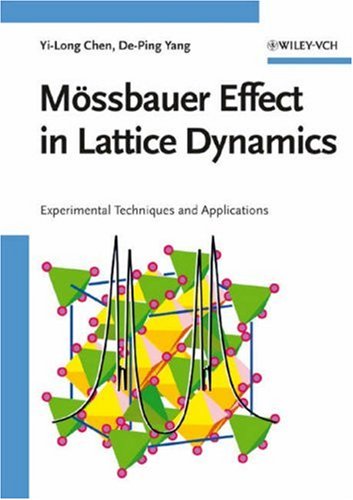

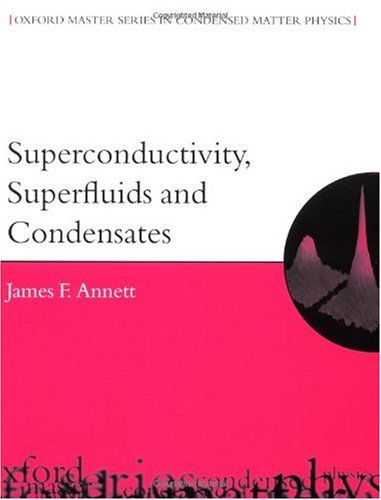
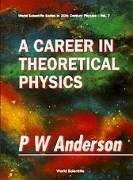
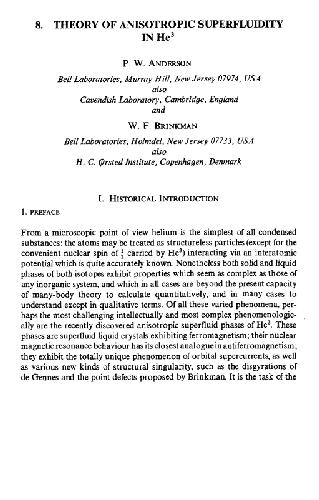

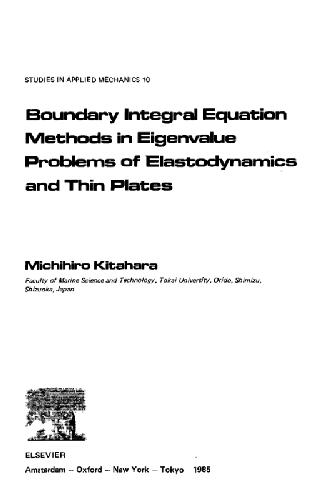
Reviews
There are no reviews yet.